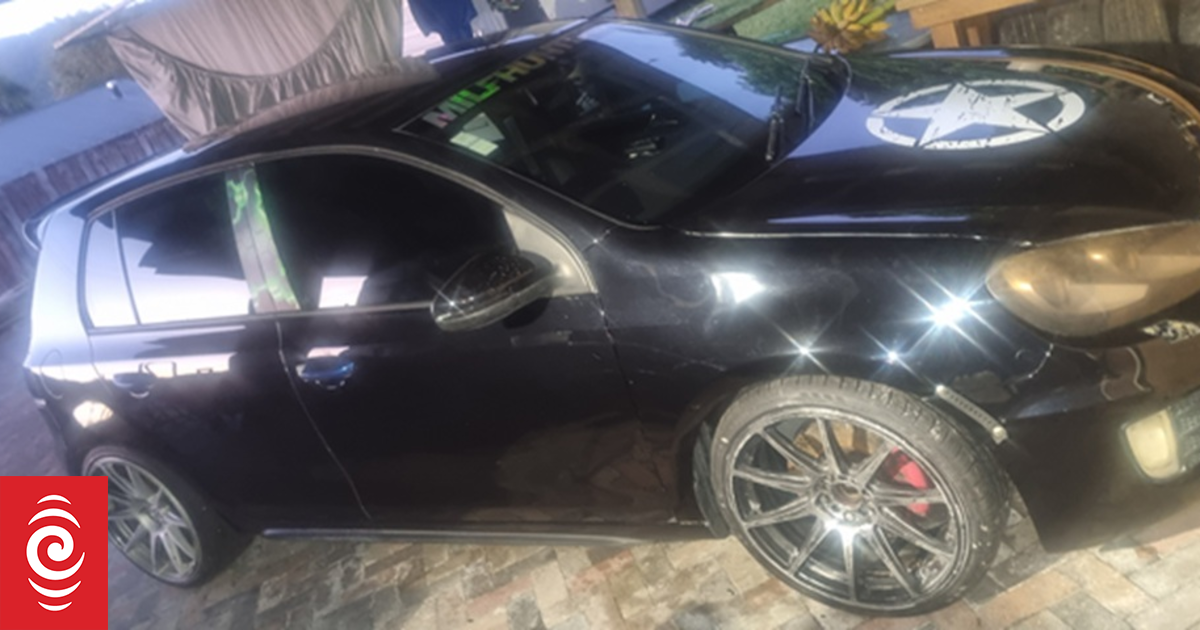Whangārei Heads locals Nigel Boland (left) and Dave Mayall make the most of discounted fuel while they can. Photo / Michael Cunningham
Northland service stations were rushed off their feet as motorists made last-minute dashes for discounts hours before the fuel tax cut was reversed.
At midnight on Friday, the cost of fuel increased up to 29c a litre. The temporary removal of fuel excise in March last year was designed to support Kiwis through the global energy crisis last year which saw petrol spike to about $3 a litre.
The looming price hike caused major queues in some cities throughout the country but Northlanders seemed slightly calmer. Although service stations throughout the region reported having some of their busiest days yet.
GAS Parua Bay manager Nicky Brown said the first customer stepped through the door at 6.30am when the station opened – and people kept coming.
Advertisement
“By 11.30am we had sold the same volume of fuel as we did for the whole day last Friday.”
Among those stocking up at the station was Nigel Boland, who was making the most of the cheaper prices to fuel his earthworks machinery as well as lawnmowers.
At the neighbouring pump was Dave Mayall, whose sarcastic response to the impending price hike was a simple: “Oh, great.”
Brown said that by 2.30pm more than half a dozen boats had been filled up at the station and one regular had filled up six petrol containers with fuel.
Advertisement
“It’s such a big increase that’s going to impact a lot of people.”
She worked out petrol would cost roughly $14.50 more per 50L.
“That’s a lot of money to some people.”
/cloudfront-ap-southeast-2.images.arcpublishing.com/nzme/WY3WMZQC7ZGHHEH3OKT4RTJ3QY.JPG)
Public anger at Whangārei’s fuel prices being higher than much of the country has already spurred an investigation by the Commerce Commission into why that’s so.
Brown said none of the added expense goes into the station’s pocket either.
“The price it’s going up, we don’t make any of that. It goes straight to the Government.”
GAS Maungatūroto worker JR said it had been “pretty flat out” and he expected more with the evening rush. The same went for GAS Bream Bay, which had to ring in an extra staff member to help cope with the rush.
JR reported customers were also sharing concern about the end of Countdown shoppers being able to earn reward points for fuel discounts through the AA, which takes effect early next year.
It appeared motorists in the Far North and Kaipara had the same idea as their Whangārei counterparts.
Kāeo BP manager John Cottle said his station had been busier than usual but that paled in comparison to down the line.
Advertisement
“I had a couple of guys with containers. Another brought both of his motorbikes to fill up.”
A Caltex Kaiwaka employee said their station had been “busier than usual” for a Friday.
On a positive note, Brown said, staff had been spared the usual unpleasantness that went along with climbing petrol prices because the Government had made it clear it was due to tax.
The end of the fuel tax discount is among a raft of cost-of-living subsidies and temporary tax cuts that ended.
How to save fuel:
1. Minimise vehicle use
Plan to do a number of errands in one trip rather than several trips and save both time and fuel. Try to avoid short vehicle trips by walking or cycling.
Advertisement
2. Drive in the right gear
Driving in a gear lower than you need wastes fuel, and letting the engine labour in top gear on hills and corners is also wasteful. Avoid the use of power options that drop the car into a lower gear and therefore use more fuel.
3. Drive smoothly
Stop/start driving is much less efficient than driving at a constant speed. Avoid travelling during peak hours and on congested roads whenever possible.
Advertisement
Take it easy on the accelerator – more revs equals more petrol use.
4. Don’t idle
Start your car when you are ready to go. Once on the road, minimise fuel wasted in idling by stopping the engine whenever your car is stopped or held up for an extended period of time.
5. Don’t Speed
Advertisement
Fuel consumption increases significantly over about 90km/h. At 110km/h your car uses up to 25 per cent more fuel than it would cruising at 90km/h. If your car is fitted with cruise control, using it during highway driving will help to maintain a steadier speed, which will save fuel.
6. Look after your vehicle’s tyres
Inflate your vehicle’s tyres to the highest pressure recommended by the manufacturer and make sure your wheels are properly aligned. Looking after your tyres will not only reduce your fuel consumption it will also extend tyre life and improve handling.
7. Use air conditioning sparingly
Advertisement
Air conditioners can use about 10 per cent extra fuel when operating. However, at speeds of over 80km/h, the use of air conditioning is better for fuel consumption than an open window as this creates aerodynamic drag. If it is hotter inside your car than outside when you start a trip, drive with the windows down for a few minutes to help cool the car before starting the air conditioning.
8. Travel light
The more weight a vehicle carries, the more fuel it uses. Don’t use your car as a mobile store room. Leave heavy items like tools and sports equipment at home when you don’t need them on a trip.
Source: cardsmart.co.nz
Karina Cooper is deputy news director and covers breaking and general news for the Advocate. She also has a special interest in investigating what is behind the headlines and getting to heart of a story.



